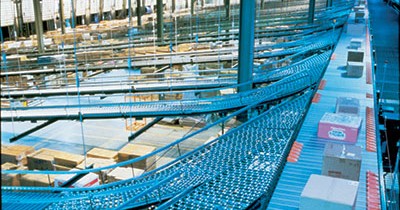Guest Commentary: Avoiding the Costs of Non-compliance
by Jeff Ross
During the mid-1990s, several of the country’s retailers initiated vendor compliance programs that included substantial financial penalties for failure to comply. Penalty-based compliance systems are now prevalent among large retailers, resulting in challenges to operational efficiencies within the shipping distribution center (DC) due to the need to pull orders off-line from the standard fulfillment process and perform specific labeling prior to shipment.
In the worst case scenario, the additional work to print and apply labels is not completed with 100 percent accuracy, and the DC incurs tens of thousands of dollars in penalties for noncompliance, in addition to the investment in labor. As a DC manager, I unfortunately had some first-hand experience with the challenges of complying with very detailed demands as well as a limited, but very painful experience with the cost of an instance of non-compliance and the resulting penalties.
There are numerous options to ensure that customer requirements are met consistently, and are often incorporated into the highly automated material handling systems that are operating in high-throughput DCs. Most involve some manner of the right SKU and quantity verification, packing list verification as well as automated print and labeling applied with post-labeling validation. Investment in this equipment is much more palatable in high-throughput DCs.
But what about the smaller, rapidly growing organization that has recently been awarded business from a major retailer? This company does not have $5 million+ to invest in automated handling systems, yet needs to be sure to comply with the requirements of the new account or it will:
–Be challenged to increase its business level with the new retailer since it is not viewed as a high-quality vendor
–Absorb substantial penalties for non-compliance
–Lose the recently acquired account for non-compliance
These smaller organizations do have options. For example, we recently quoted an automated print/apply system for a company very similar to the one described above. The total capital investment was approximately $200,000 to purchase and install a stand-alone automated print/apply line with advanced software technology and interface to the company’s enterprise software (ERP). In this example, the product is picked in batch, then manually loaded onto a conveyor which:
–Conveys cases through a scanner to detect the SKU number (from the UPC bar code)
–Performs a look-up from the order detail table and determines which orders require the SKU and in what quantity
–Conveys through a print/apply device where the specific vendor-formatted label is applied
–Conveys the labeled cases through a verification scanner to ensure a proper match between the UPC and vendor bar code with a reject lane for miss-matches
The limited investment in this type of technology eliminates a substantial amount of labor and can immediately eliminate or greatly reduce vendor compliance errors and their associated penalties. For many smaller companies, a stand-alone print/apply solution could offer a very positive payback, while improving their image with their larger retail customers.
Jeff Ross is VP, Consulting with MHI Member FORTE





